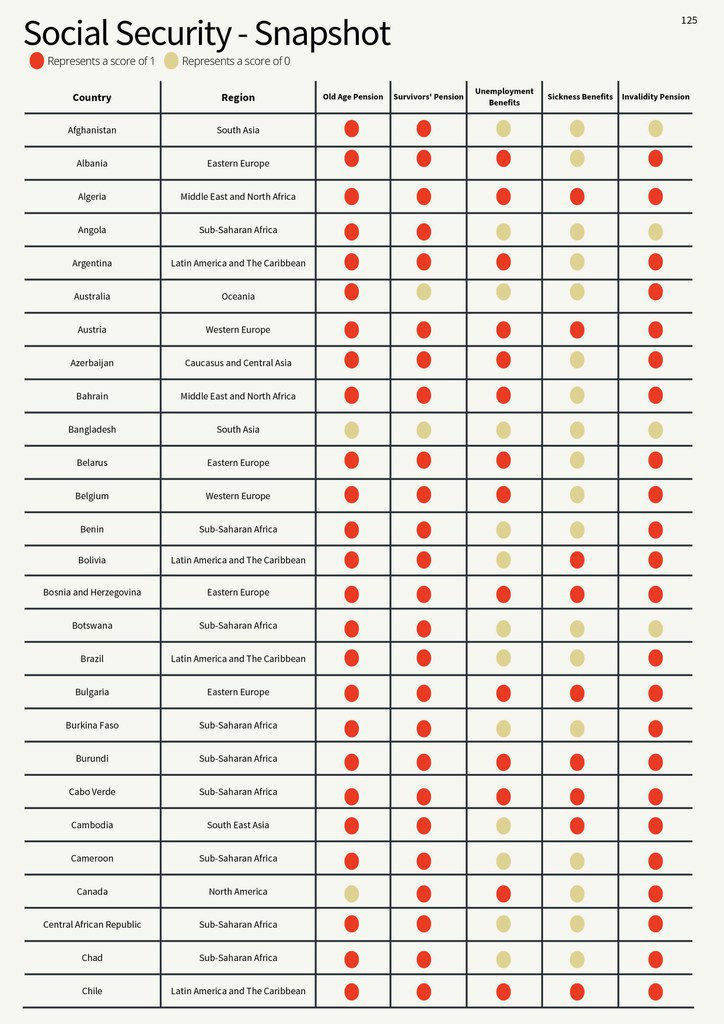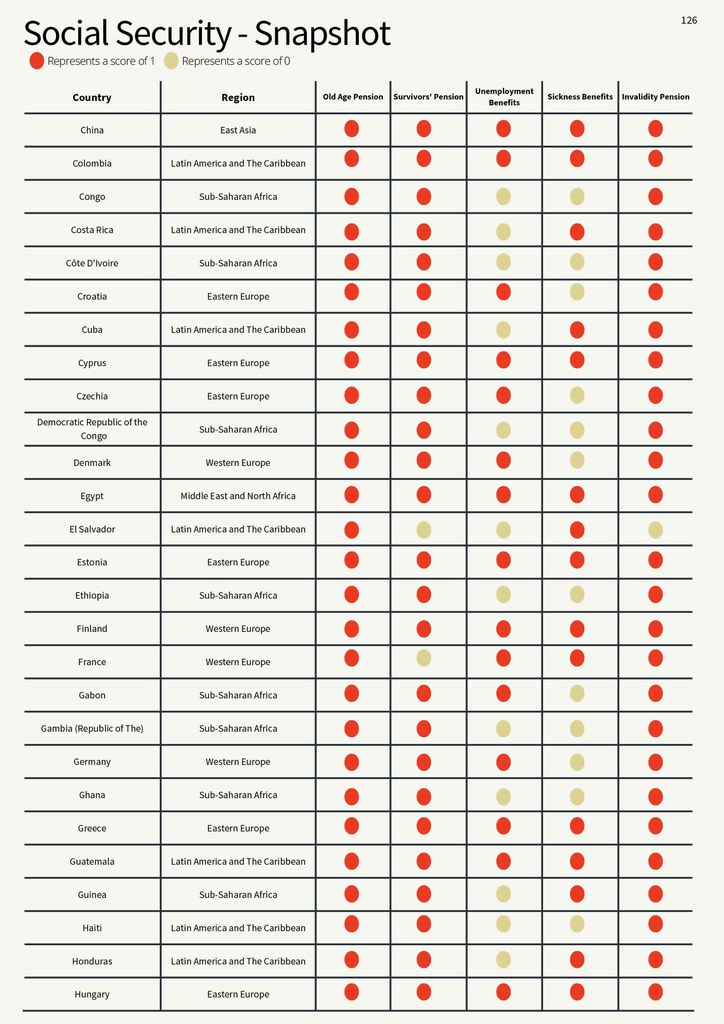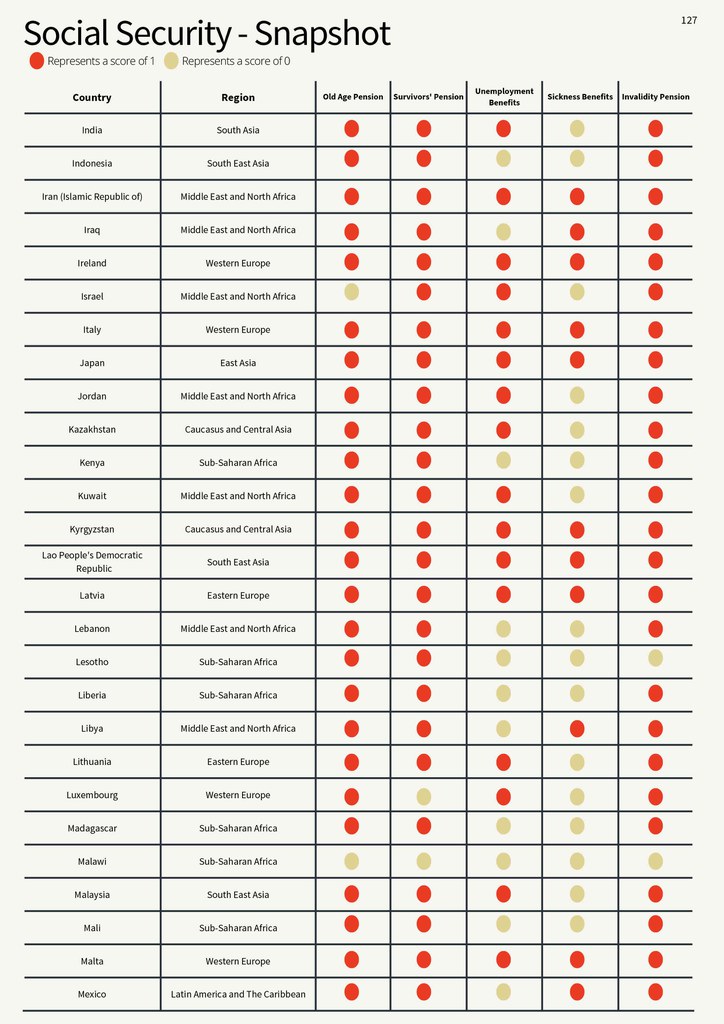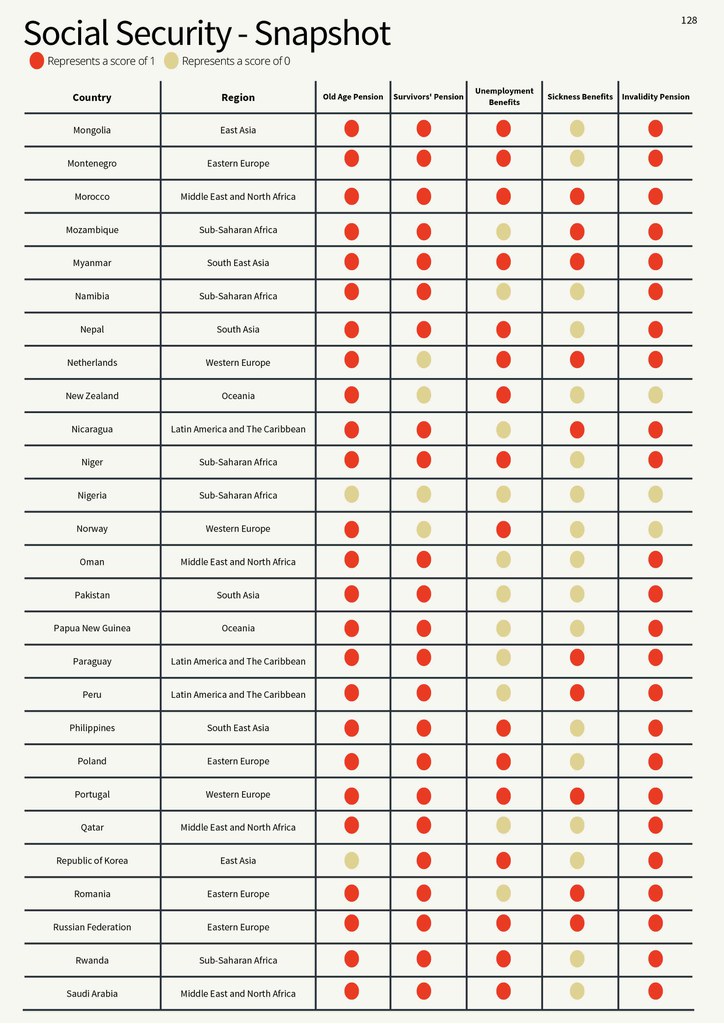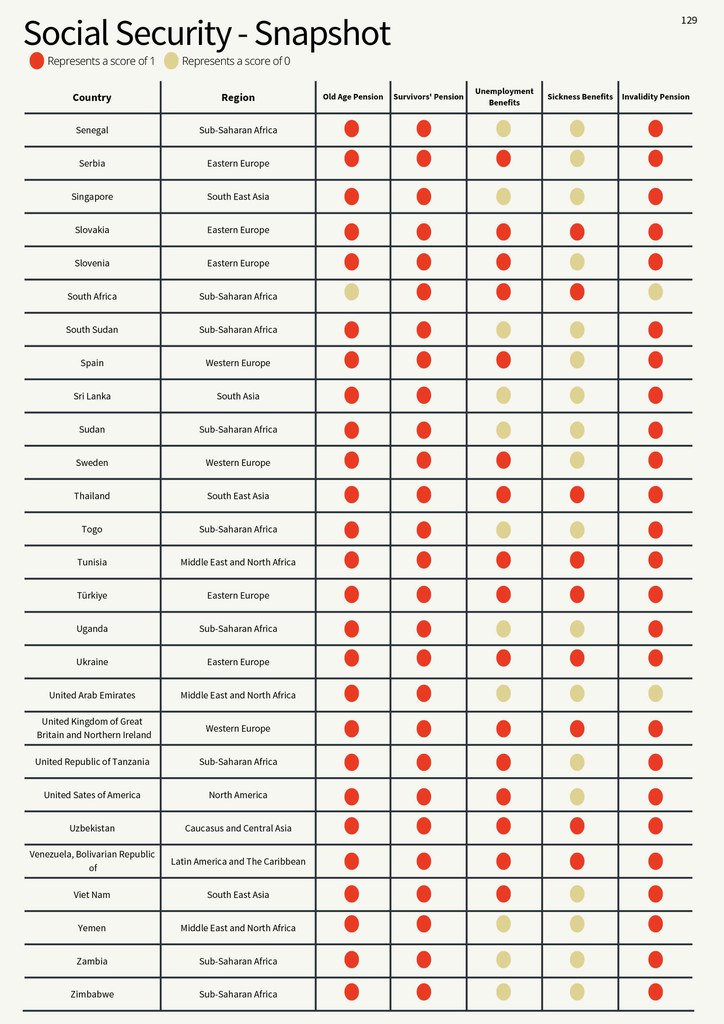Social Security
Adequate social protection is an important aspect of decent work. Protection from the major risks in life through social protection helps keep people out of poverty and prevents them from being thrown into poverty when unforeseen catastrophes occur, such as an accident, an illness, loss of a job or in old age when work is impossible or very difficult
7.1 Old Age Pension
Does the law provide for old age pension?
International Regulatory Standard
Social Security (Minimum Standards) Convention, 1952 (No. 102) stipulates the provision of old-age benefits at the rate of 40 per cent of a worker’s former wage, where the contingency covered shall be survival beyond a prescribed age of not more than 65 years or such higher age as may be fixed by the competent authority with due regard to the working ability of elderly persons in the country concerned. National laws or regulations may provide that the benefit of a person otherwise entitled to it may be suspended if such person is engaged in any prescribed gainful activity or that the benefit, if contributory, may be reduced where the earnings of the beneficiary exceed a prescribed amount and, if non-contributory, may be reduced where the earnings of the beneficiary or his other means or the two taken together exceed a prescribed amount. The benefit shall be a periodical payment.
Methodology
Whether law provides for old-age pension:
1: Legislation creates a contributory old-age pension or if an old-age pension is paid through a non-contributory universal benefits system (both administered by the state).*
0: There is no explicit provision for the state-administered old age pension, it is employer liability, or the old age pension is means-tested.
87% of the assessed countries provide for a contributory old age pension, funded through a social insurance system.
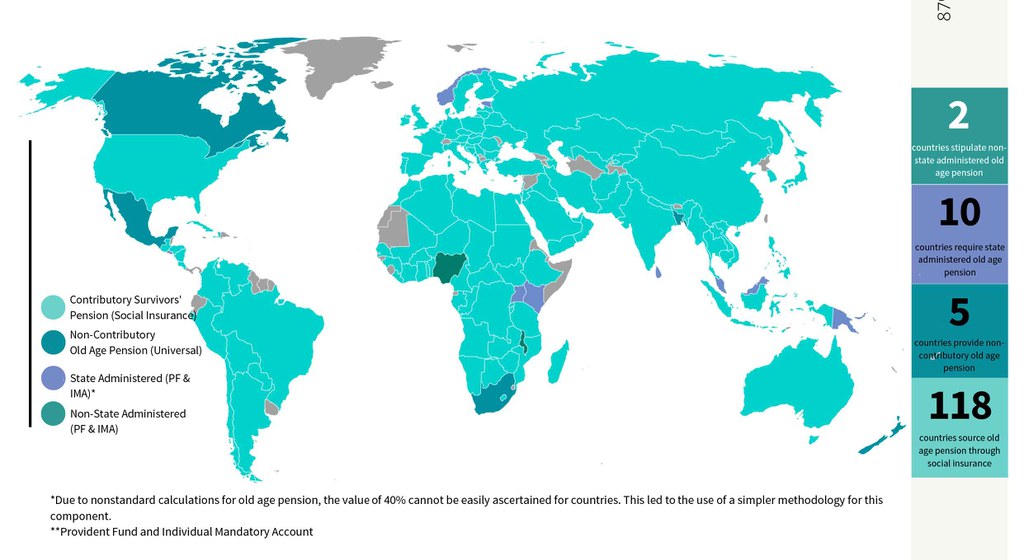
7.2 Dependents'/Survivors' Pension
Does the law provide for dependents'/survivors' pension?
International Regulatory Standard
Social Security (Minimum Standards) Convention, 1952 (No. 102) stipulates the provision of survivors’ benefits for wives and children of breadwinners at the rate of at least 40 per cent of the worker’s wage, where the contingency covered shall include the loss of support suffered by the widow or child as the result of the death of the breadwinner; in the case of a widow, the right to benefit may be made conditional on her being presumed, in accordance with national laws or regulations, to be incapable of self-support. National laws or regulations may provide that the benefit of a person otherwise entitled to it may be suspended if such person is engaged in any prescribed gainful activity or that the benefit, if contributory, may be reduced where the earnings of the beneficiary exceed a prescribed amount, and, if non- contributory, may be reduced where the earnings of the beneficiary or his other means or the two taken together exceed a prescribed amount. The benefit shall be a periodical payment.
Methodology
Whether law provides for survivors' /dependents’ pension:
1: The legislation provides for contributory social insurance or non-contributory universal benefits for the survivors’ or dependents’ pension in the event of workers’ or pensioners’ death once they are eligible for old-age pension or disability pension (both administered by the state).*
0: There is no explicit provision for state-administered survivors’ pension or is the employer’s liability or if survivors’ pension is means-tested.
Only 5% of the assessed countries require payment of survivors' pension through state administered provident funds and individual mandatory accounts.
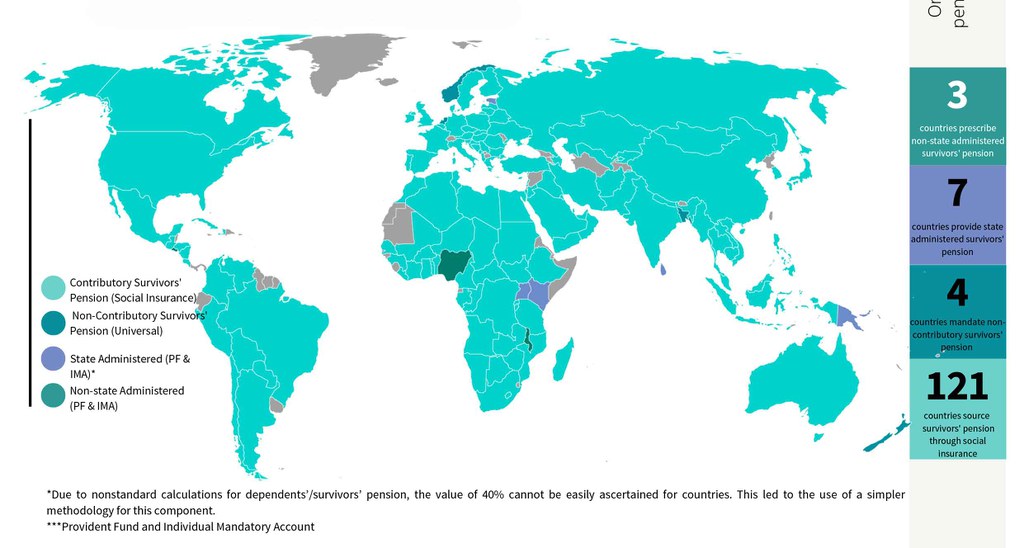
7.3 Unemployment Benefits
Does the law provide for unemployment benefits?
International Regulatory Standard:
Social Security (Minimum Standards) Convention, 1952 (No. 102) stipulates the provision of unemployment benefits at the rate of at least 45 per cent of a worker’s former wage, where the contingency covered should include earnings’ suspension as defined by national laws or regulations, due to inability to obtain suitable employment in the case of a person protected who is capable of, and available for, work. The minimum duration of the benefit shall be a periodical payment for 13 weeks in a period of 12 months or periodical payment for 26 weeks within 12 months where all residents whose means during the contingency do not exceed prescribed limits.
Methodology:
Whether law provides for unemployment benefits:
1: The legislation provides for unemployment benefits when a worker loses employment, either through a contributory social insurance system or a non- contributory universal benefits system.*
0: There is no explicit provision for a state-administered unemployment benefits system or where unemployment benefits are means-tested or where only severance pay is provided.
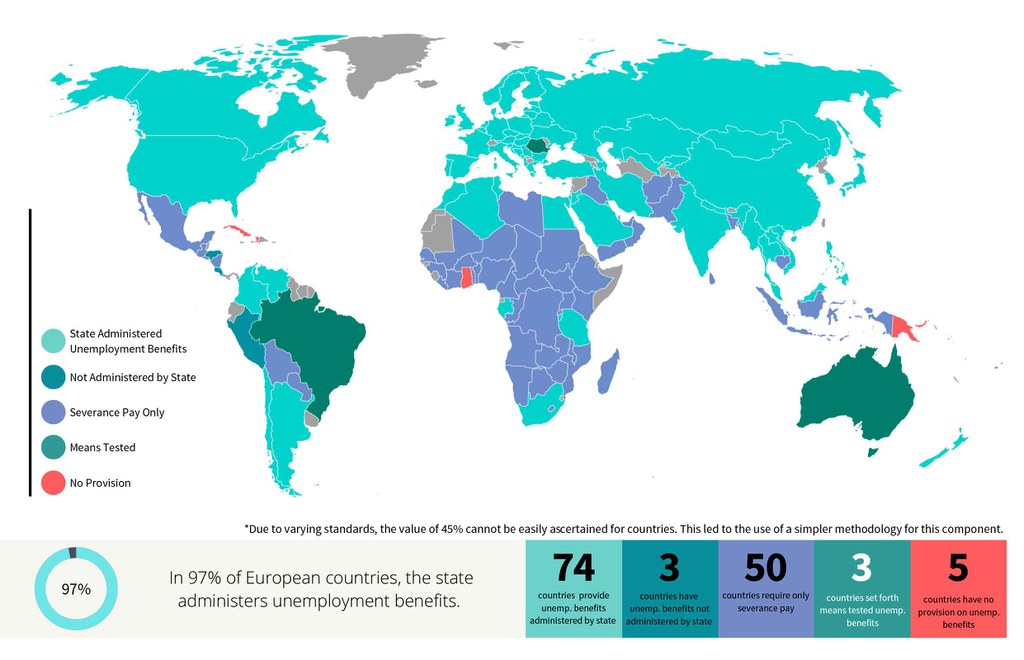
7.4a Sickness Benefits - Duration
Does the law require paid sick leave for the first six months of sickness?
International Regulatory Standard
Social Security (Minimum Standards) Convention, 1952 (No. 102) stipulates the provision of sickness benefits at the rate of at least 45 per cent of a worker’s former wage, where the contingency covered should include incapacity for work resulting from a morbid condition and involving suspension of earnings, as defined by national laws or regulations. The benefit shall be a periodical payment for the whole of contingency and limited to 26 weeks in each case of sickness, in which event it need not be paid for the first three days of suspension of earnings or where all residents whose means during the contingency do not exceed prescribed limits are protected.
Methodology
Whether law provides for paid sick leave for the first six months of sickness:
1: The legislation allows paid sick leave or sickness benefits for a minimum of the first six months of illness. The paid sick leave/sickness benefits must have been funded through a contributory social insurance system or universally accessible system.
0: Paid sick leave/sickness benefits are less than six months or if it is paid after a more than 10-day waiting period, or if it is only employer liability.
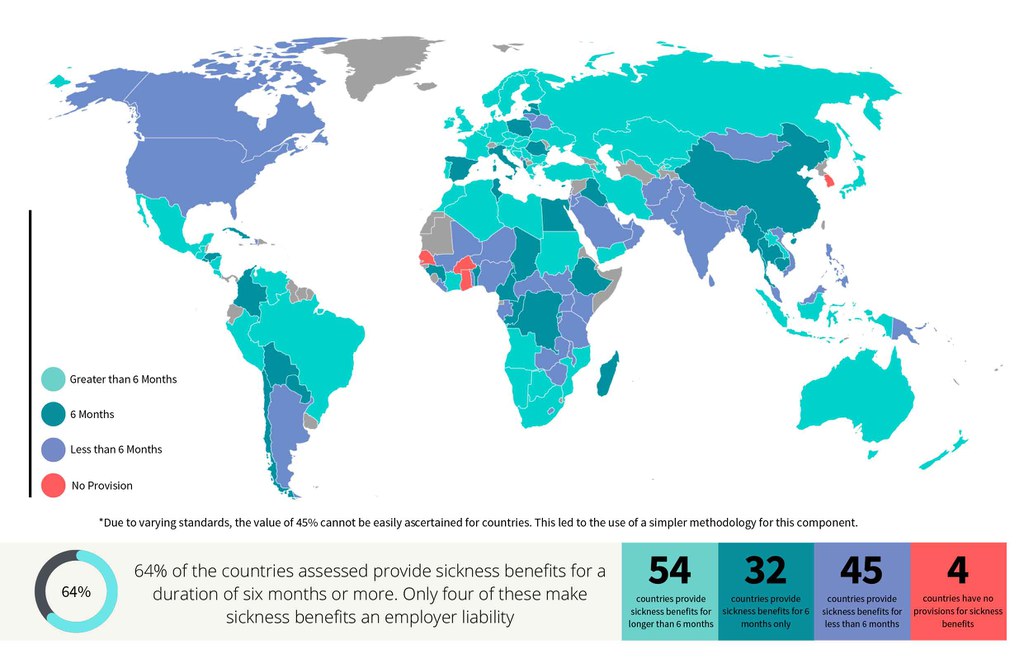
7.4b Sickness Benefits - Source
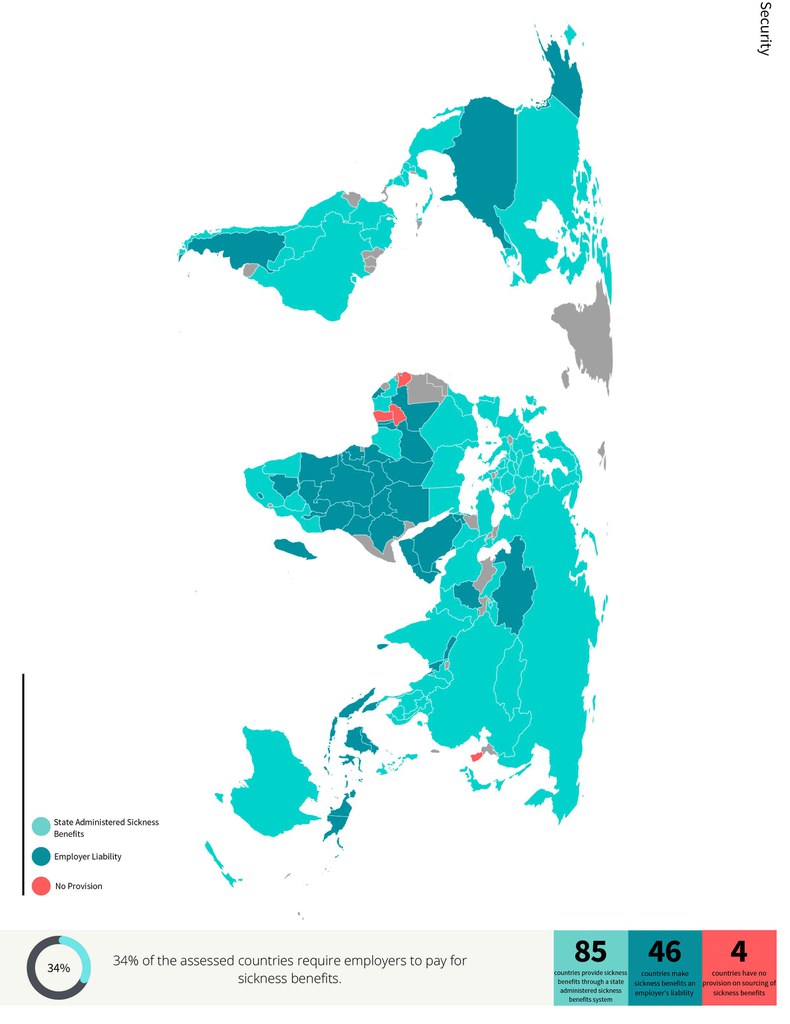
7.5 Invalidity Pension
Does the law provide for invalidity pension?
International Regulatory Standard
Social Security (Minimum Standards) Convention, 1952 (No. 102) stipulates the provision of invalidity benefit at the rate of 40 per cent of a worker’s former wage, where the contingency covered shall include the inability to engage in any gainful activity to an extent prescribed which inability is likely to be permanent or persists after the exhaustion of sickness benefit. The benefit shall be a periodical payment, and it shall be granted throughout the contingency or until an old- age benefit becomes payable.
Methodology
Whether legislation provides for invalidity pension:
1: Occupational disability or invalidity pension is provided under the law and is paid through a contributory social insurance system or through a non-contributory universal benefits system financed through general taxation (both administered by the state).*
0: The invalidity pension is only employer liability or means-tested, or if there is no explicit provision for a state-administered invalidity pension.
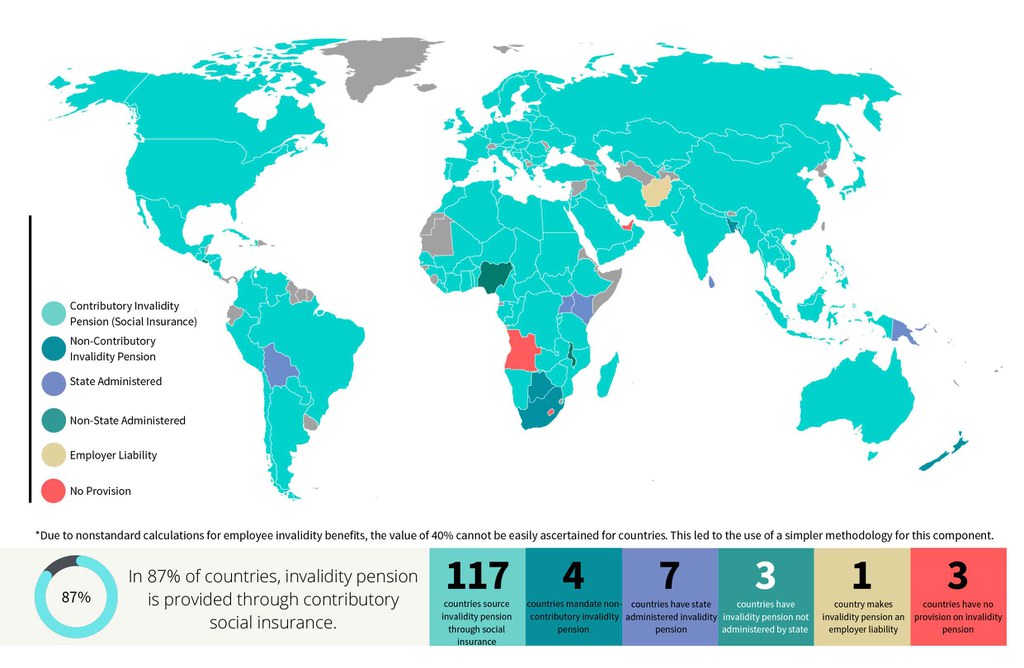
Social Security - Snapshot
